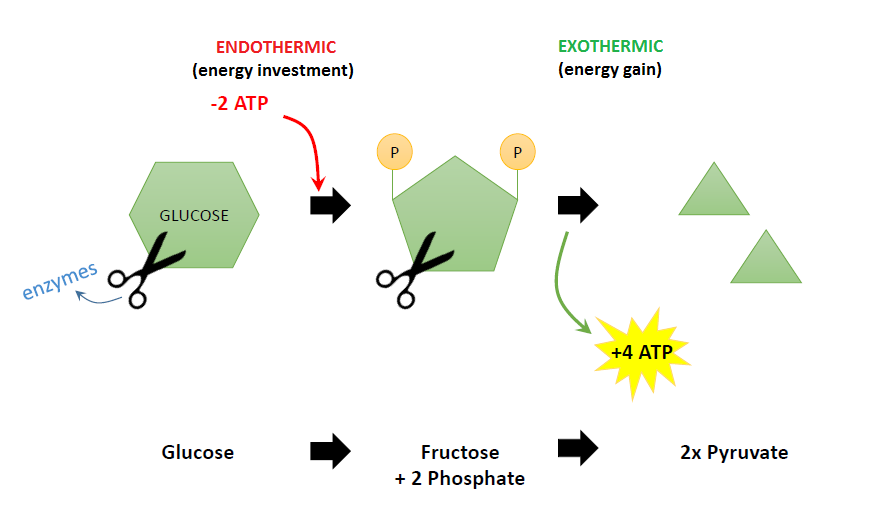What is the endothermic reaction for aerobic respiration in a living cell?
1 Answer
Sep 17, 2016
The first part of glycolysis is endothermic:
Explanation:
The difference between endothermic and exothermic in this context:
- endothermic = a reaction that requires energy to occur
- exothermic = a reaction the creates energy
Cellular respiration can be divided into three steps:
- Glycolysis
- Krebs Cycle
- Electron Transport Chain
When you look at cellular respiration (aerobic) as a whole, it is an exothermic reaction because it creates chemical energy in the form of ATP.
There is an endothermic step in glycolysis. Glycolysis is the breakdown of glucose into 2 pyruvate molecules. As a whole glycolysis is exothermic, yielding net 2 ATP. Glycolysis itself can be devided into:
- Glycolysis I :
#color(red)"endothermic"# process in which glucose is converted into fructose with 2 phosphate groups#-># investment of 2 ATP - Glycolysis II :
#color(green)"exothermic"# process in which 2 pyruvate molecules and 4 ATP is formed.
The image below visualizes this process. Glycolysis I is the only endothermic reaction in cellular respiration, the other processes are exothermic.


